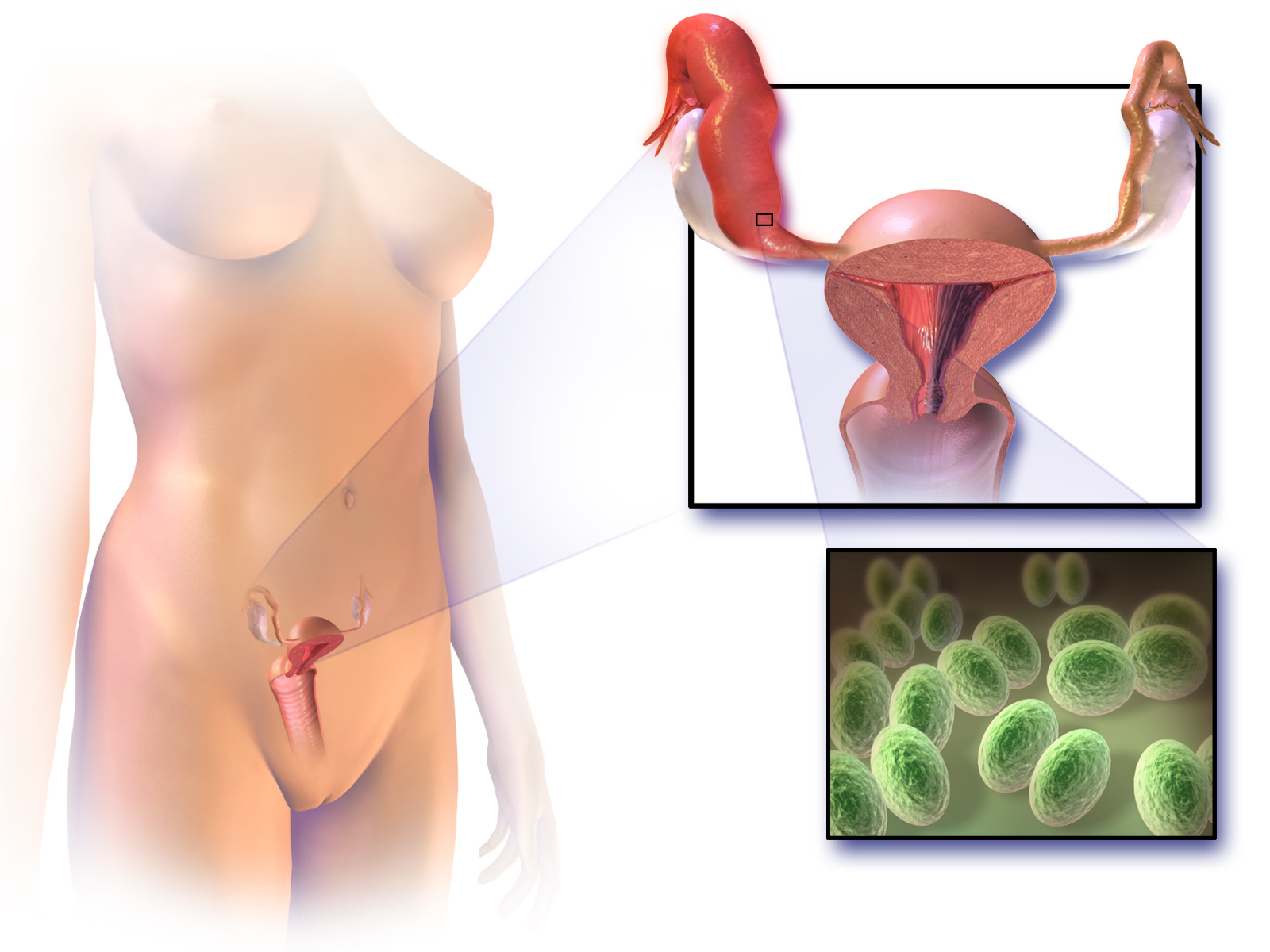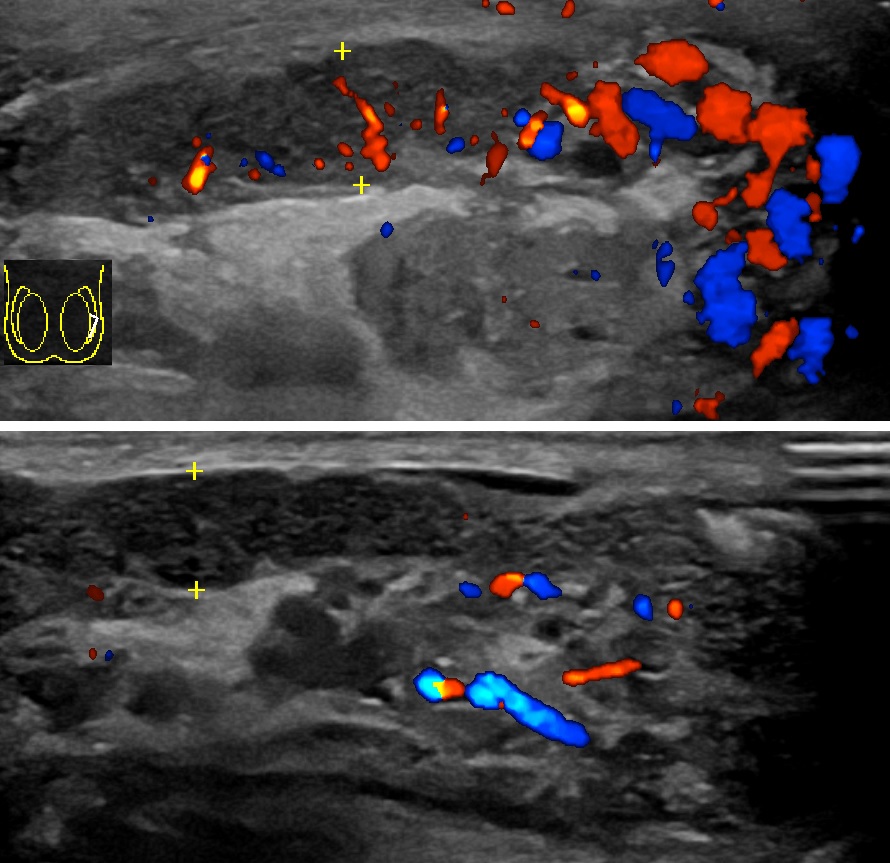|
Gonorrhoea
Gonorrhoea or gonorrhea, colloquially known as the clap, is a sexually transmitted infection (STI) caused by the bacterium ''Neisseria gonorrhoeae''. Infection may involve the genitals, mouth, or rectum. Gonorrhea is spread through sexual contact with an infected person, or from a mother to a child during birth. Infected males may experience pain or burning with urination, discharge from the penis, or testicular pain. Infected females may experience burning with urination, vaginal discharge, vaginal bleeding between periods, or pelvic pain. Complications in females include pelvic inflammatory disease and in males include inflammation of the epididymis. Many of those infected, however, have no symptoms. If untreated, gonorrhea can spread to joints or heart valves. Globally, gonorrhea affects about 0.8% of women and 0.6% of men. An estimated 33 to 106 million new cases occur each year. In 2015, it caused about 700 deaths. Diagnosis is by testing the urine, urethra in m ... [...More Info...] [...Related Items...] OR: [Wikipedia] [Google] [Baidu] |
Neisseria Gonorrhoeae
''Neisseria gonorrhoeae'', also known as ''gonococcus'' (singular) or ''gonococci'' (plural), is a species of Gram-negative diplococci bacteria first isolated by Albert Ludwig Sigesmund Neisser, Albert Neisser in 1879. An obligate human pathogen, it primarily colonizes the mucosal lining of the urogenital tract; however, it is also capable of adhering to the mucosa of the nose, pharynx, rectum, and conjunctiva. It causes the sexually transmitted infection, sexually transmitted genitourinary infection gonorrhea as well as other forms of gonococcal disease including disseminated gonococcemia, septic arthritis, and gonococcal ophthalmia neonatorum. ''N. gonorrhoeae'' is Oxidase test, oxidase positive and a microaerophile that is capable of surviving Phagocyte, phagocytosis and growing inside neutrophils. Microbiological culture, Culturing it requires carbon dioxide supplementation and enriched agar (chocolate agar) with various antibiotics (Thayer–Martin agar, Thayer–Martin). ... [...More Info...] [...Related Items...] OR: [Wikipedia] [Google] [Baidu] |
Pelvic Inflammatory Disease
Pelvic inflammatory disease (PID), also known as pelvic inflammatory disorder, is an infection of the upper part of the female reproductive system, mainly the uterus, fallopian tubes, and ovaries, and inside of the pelvis. Often, there may be no symptoms. Signs and symptoms, when present, may include lower abdominal pain, vaginal discharge, fever, dysuria, burning with urination, dyspareunia, pain with sex, postcoital bleeding, bleeding after sex, or irregular menstruation. Untreated PID can result in long-term complications including infertility, ectopic pregnancy, chronic pelvic pain, and Infectious causes of cancer, cancer. The disease is caused by bacteria that spread from the vagina and cervix. It has been reported that infections by ''Neisseria gonorrhoeae'' or ''Chlamydia trachomatis'' are present in 75 to 90 percent of cases. However, in the UK it is reported by the NHS that infections by ''Neisseria gonorrhoeae'' and ''Chlamydia trachomatis'' are responsible for only a ... [...More Info...] [...Related Items...] OR: [Wikipedia] [Google] [Baidu] |
Sexually Transmitted Infection
A sexually transmitted infection (STI), also referred to as a sexually transmitted disease (STD) and the older term venereal disease (VD), is an infection that is Transmission (medicine), spread by Human sexual activity, sexual activity, especially Sexual intercourse, vaginal intercourse, anal sex, oral sex, or sometimes Non-penetrative sex#Manual sex, manual sex. STIs often do not initially cause symptoms, which results in a risk of transmitting them to others. The term ''sexually transmitted infection'' is generally preferred over ''sexually transmitted disease'' or ''venereal disease'', as it includes cases with no Signs and symptoms#Symptomatic, symptomatic disease. Symptoms and signs of STIs may include vaginal discharge, penile discharge, genital ulcers, ulcers on or around the genitals, and pelvic pain. Some STIs can cause infertility. Bacterial STIs include Chlamydia infection, chlamydia, gonorrhea, and syphilis. Viral STIs include genital warts, genital herpes, and ... [...More Info...] [...Related Items...] OR: [Wikipedia] [Google] [Baidu] |
Septic Arthritis
Acute septic arthritis, infectious arthritis, suppurative arthritis, pyogenic arthritis, osteomyelitis, or joint infection is the invasion of a joint by an infectious agent resulting in joint inflammation. Generally speaking, symptoms typically include redness, heat and pain in a single joint associated with a decreased ability to move the joint. Onset is usually rapid. Other symptoms may include fever, weakness and headache. Occasionally, more than one joint may be involved, especially in neonates, younger children and immunocompromised individuals. In neonates, infants during the first year of life, and toddlers, the signs and symptoms of septic arthritis can be deceptive and mimic other infectious and non-infectious disorders. In children, septic arthritis is usually caused by non-specific bacterial infection and commonly hematogenous, i.e., spread through the bloodstream. Septic arthritis and/or acute hematogenous osteomyelitis usually occurs in children with no co- ... [...More Info...] [...Related Items...] OR: [Wikipedia] [Google] [Baidu] |
Antibiotic Resistance
Antimicrobial resistance (AMR or AR) occurs when microbes evolve mechanisms that protect them from antimicrobials, which are drugs used to treat infections. This resistance affects all classes of microbes, including bacteria (antibiotic resistance), viruses (antiviral resistance), parasites (antiparasitic resistance), and fungi (antifungal resistance). Together, these adaptations fall under the AMR umbrella, posing significant challenges to healthcare worldwide. Misuse and improper management of antimicrobials are primary drivers of this resistance, though it can also occur naturally through genetic mutations and the spread of resistant genes. Antibiotic resistance, a significant AMR subset, enables bacteria to survive antibiotic treatment, complicating infection management and treatment options. Resistance arises through spontaneous mutation, horizontal gene transfer, and increased selective pressure from antibiotic overuse, both in medicine and agriculture, which accelerat ... [...More Info...] [...Related Items...] OR: [Wikipedia] [Google] [Baidu] |
Epididymitis
Epididymitis is a medical condition characterized by inflammation of the epididymis, a curved structure at the back of the testicle. Onset of pain is typically over a day or two. The pain may improve with raising the testicle. Other symptoms may include swelling of the testicle, burning with urination, or frequent urination. Inflammation of the testicle is commonly also present. In those who are young and sexually active, gonorrhea and chlamydia are frequently the underlying cause. In older males and men who practice insertive anal sex, enteric bacteria are a common cause. Diagnosis is typically based on symptoms. Conditions that may result in similar symptoms include testicular torsion, inguinal hernia, and testicular cancer. Ultrasound can be useful if the diagnosis is unclear. Treatment may include pain medications, NSAIDs, and elevation. Recommended antibiotics in those who are young and sexually active are ceftriaxone and doxycycline. Among those who are older, ofloxaci ... [...More Info...] [...Related Items...] OR: [Wikipedia] [Google] [Baidu] |
Azithromycin
Azithromycin, sold under the brand names Zithromax (in oral form) and Azasite (as an eye drop), is an antibiotic medication used for the treatment of several bacterial infections. This includes otitis media, middle ear infections, strep throat, pneumonia, traveler's diarrhea, Sexually transmitted infection, STI and certain other gastroenteritis, intestinal infections. Along with other medications, it may also be used for malaria. It is Drug administration, administered by mouth, intravenously, into a vein, or into the eye drops, eye. Common side effects include nausea, vomiting, diarrhea and upset stomach. An allergic reaction, such as anaphylaxis, or a type of diarrhea caused by Clostridioides difficile infection, ''Clostridioides difficile'' is possible. Azithromycin causes drug-induced QT prolongation, QT prolongation that may cause life-threatening arrhythmias such as torsades de pointes. While some studies claim that no harm has been found with use during pregnancy, more ... [...More Info...] [...Related Items...] OR: [Wikipedia] [Google] [Baidu] |
Urethra
The urethra (: urethras or urethrae) is the tube that connects the urinary bladder to the urinary meatus, through which Placentalia, placental mammals Urination, urinate and Ejaculation, ejaculate. The external urethral sphincter is a striated muscle that allows voluntary control over urination. The Internal urethral sphincter, internal sphincter, formed by the involuntary smooth muscles lining the bladder neck and urethra, receives its nerve supply by the Sympathetic nervous system, sympathetic division of the autonomic nervous system. The internal sphincter is present both in males and females. Structure The urethra is a fibrous and muscular tube which connects the urinary bladder to the external urethral meatus. Its length differs between the sexes, because it passes through the penis in males. Male In the human male, the urethra is on average long and opens at the end of the external urethral meatus. The urethra is divided into four parts in men, named after the lo ... [...More Info...] [...Related Items...] OR: [Wikipedia] [Google] [Baidu] |
Cervix
The cervix (: cervices) or cervix uteri is a dynamic fibromuscular sexual organ of the female reproductive system that connects the vagina with the uterine cavity. The human female cervix has been documented anatomically since at least the time of Hippocrates, over 2,000 years ago. The cervix is approximately 4 cm long with a diameter of approximately 3 cm and tends to be described as a cylindrical shape, although the front and back walls of the cervix are contiguous. The size of the cervix changes throughout a woman's life cycle. For example, women in the fertile years of their reproductive cycle tend to have larger cervixes than postmenopausal women; likewise, women who have produced offspring have a larger cervix than those who have not. In relation to the vagina, the part of the cervix that opens to the uterus is called the ''internal os'' and the opening of the cervix in the vagina is called the ''external os''. Between them is a conduit commonly called the cervic ... [...More Info...] [...Related Items...] OR: [Wikipedia] [Google] [Baidu] |
Menstruation
Menstruation (also known as a period, among other colloquial terms) is the regular discharge of blood and Mucous membrane, mucosal tissue from the endometrium, inner lining of the uterus through the vagina. The menstrual cycle is characterized by the rise and fall of hormones. Menstruation is triggered by falling progesterone levels, and is a sign that pregnancy has not occurred. Women use feminine hygiene products to maintain hygiene during menses. The first period, a point in time known as menarche, usually begins during puberty, between the ages of 11 and 13. However, menstruation starting as young as 8 years would still be considered normal. The average age of the first period is generally later in the developing world, and earlier in the developed world. The typical length of time between the first day of one period and the first day of the next is 21 to 45 days in young women; in adults, the range is between 21 and 35 days with the average often cited as 28 days. In the b ... [...More Info...] [...Related Items...] OR: [Wikipedia] [Google] [Baidu] |
Men Who Have Sex With Men
Men who have sex with men (MSM) are men who engage in sexual activity with other men, regardless of their sexual orientation or sexual identity. The term was created by epidemiologists in the 1990s, to better study and communicate the spread of sexually transmitted infections such as HIV/AIDS between all sexually active males, not strictly those identifying as gay, bisexual, pansexual or various other sexualities, but also for example male prostitutes. The term is often used in medical literature and social research to describe such men as a group. It does not describe any specific kind of sexual activity, and which activities are covered by the term depends on context. The alternative term "males who have sex with males" is sometimes considered more accurate in cases where those described may not be legal adults. As a constructed category The term ''men who have sex with men'' had been in use in public health discussions, especially in the context of HIV/AIDS, si ... [...More Info...] [...Related Items...] OR: [Wikipedia] [Google] [Baidu] |









